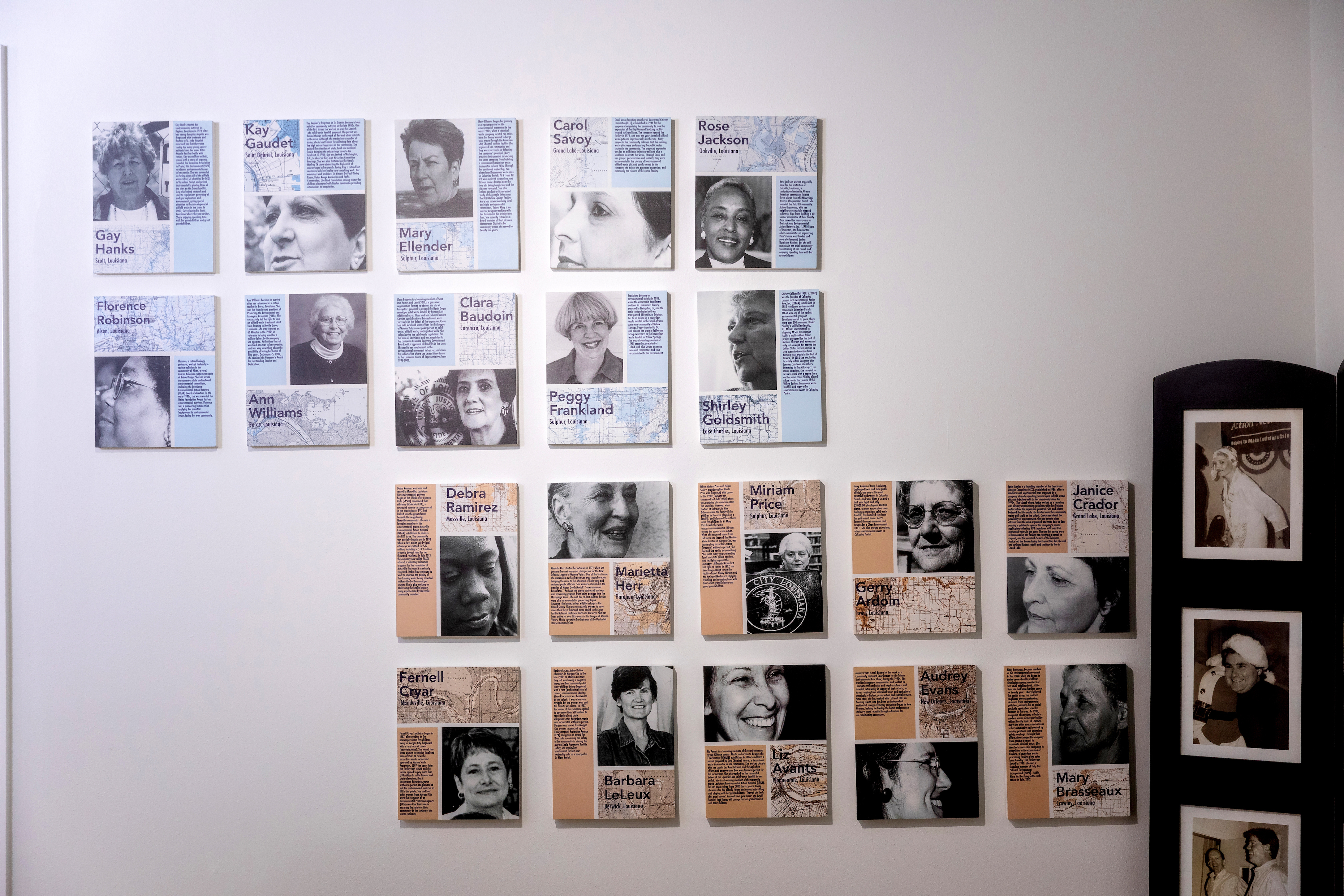
Louisiana Environmental Action Network is preserving the legacy of local women in the environmental movement
Inside a quaint house on Croydon Avenue, Marylee Orr and her son Michael Orr are constructing a tribute to Louisiana women who have taken on big industry, government and pollution over the years in the name of their communities.
The walls of Louisiana Environmental Action Network’s Mid City headquarters have recently been taken over by this exhibition of nearly 40 women from Baton Rouge to Morgan City. Photos and brief biographical panels tell their stories of struggles and successes.
The mother-son duo are part of the team behind LEAN, which has worked since the ’80s to help concerned citizens deal with the impacts of pollution, climate change and other environmental issues.
|
|
Marylee, who is also a founding member of LEAN, says most of their work tends to begin with women who sounded the alarm in their neighborhoods.
“Often my mission was started in a kitchen,” she says, “or in someone’s living room with women concerned about their husbands who work in a plant. Or they’re worried about their child who was sick, or they were worried the air didn’t smell right. The women, they tell the real story of what’s happened here.”

Depicted on the walls are women like Florence Robinson, a retired biology professor at Southern University who died in 2016. She lived in the African-American community of Alsen near Baker, surrounded by industrial facilities, waste pits, incinerators and landfills that wreaked havoc on the air quality.
When she started noticing health and respiratory issues among her family members, she decided to fight for better air quality. Her work earned her a Heinz Award and found her sitting on multiple state and national environmental committees.
Another woman is the late Mary Brasseaux, who Marylee fondly remembers as “a little ol’ Cajun lady, with a little ol’ Cajun accent.” She became involved in the environmental movement in the ’80s when she suspected the health issues she and her neighbors were facing in the town of Crowley were due to aerial pesticides used on nearby farms. Brasseaux led campaigns and neighborhood petitions against the construction of hazardous waste facilities within the city limits. She died in 2012 following a decades-long battle with cancer.
There are tons more stories like these on the walls at LEAN—many of them detailing how stay-at-home-moms and other women ended up taking their concerns for their communities even further by running for seats on city councils or state-level offices.
“At the end of the day, the people who really make the change that affects the community the most are just everyday women,” Michael says. “We wanted to represent that in a space where people could see, ‘I don’t have to be a Ph.D. to have an opinion about what is right for my community or my family’—and that’s what these women show.”
LEAN has partnered with LSU’s Hill Memorial Library and T. Harry Williams Center for Oral History to preserve all the records the nonprofit has amassed over the years. That includes recorded interviews with some of these women, thousands of images, environmental data and chemical reports on their communities and more.
The Orrs hope to rotate different educational exhibits of some of those archives at their offices, much like this current exhibition.
“We want people to have the real story from the people who did it and an understanding of who came before you, so you could know where to go,” Marylee says. “You have to learn from the history. … [Their stories] are extraordinary and inspiring, and if we didn’t tell that story, that’s going to be lost.”
LEAN is planning an open house May 1, when patrons can view the organization’s library of archives and books on the environmental movement—and learn about the women who changed the landscape of Louisiana’s environmental action. leanweb.org
This article was originally published in the April 2020 issue of 225 Magazine.
|
|
|
